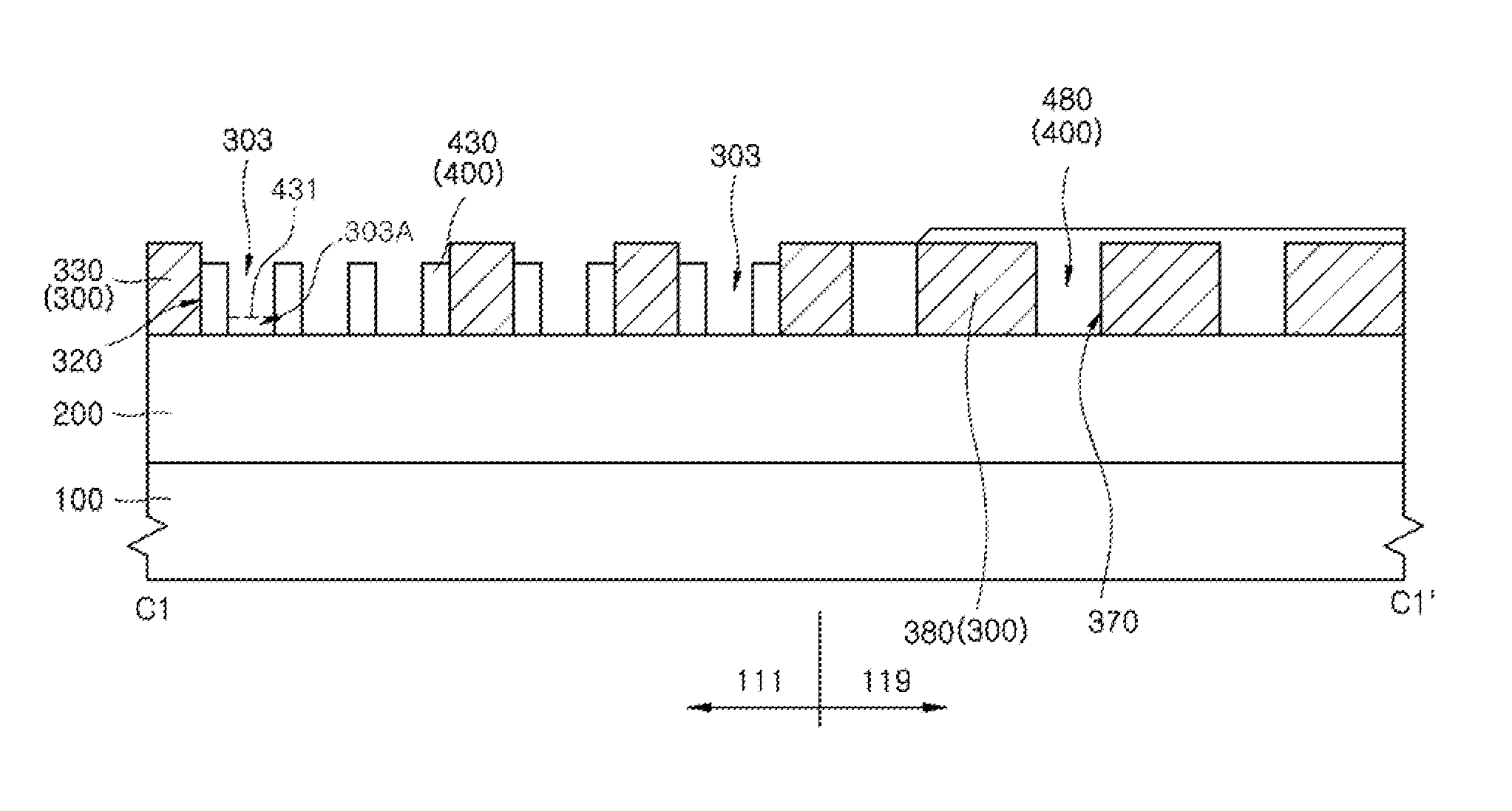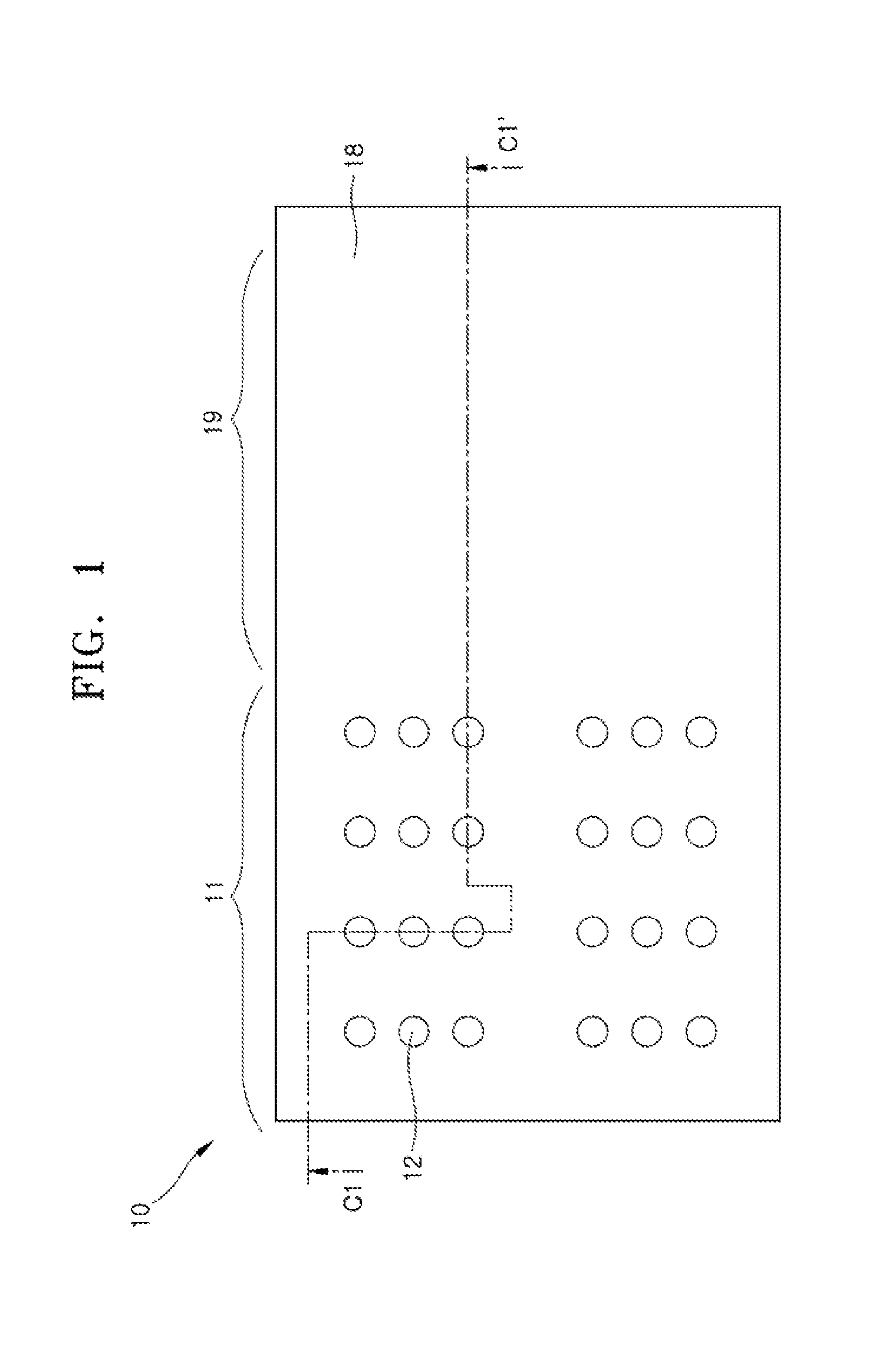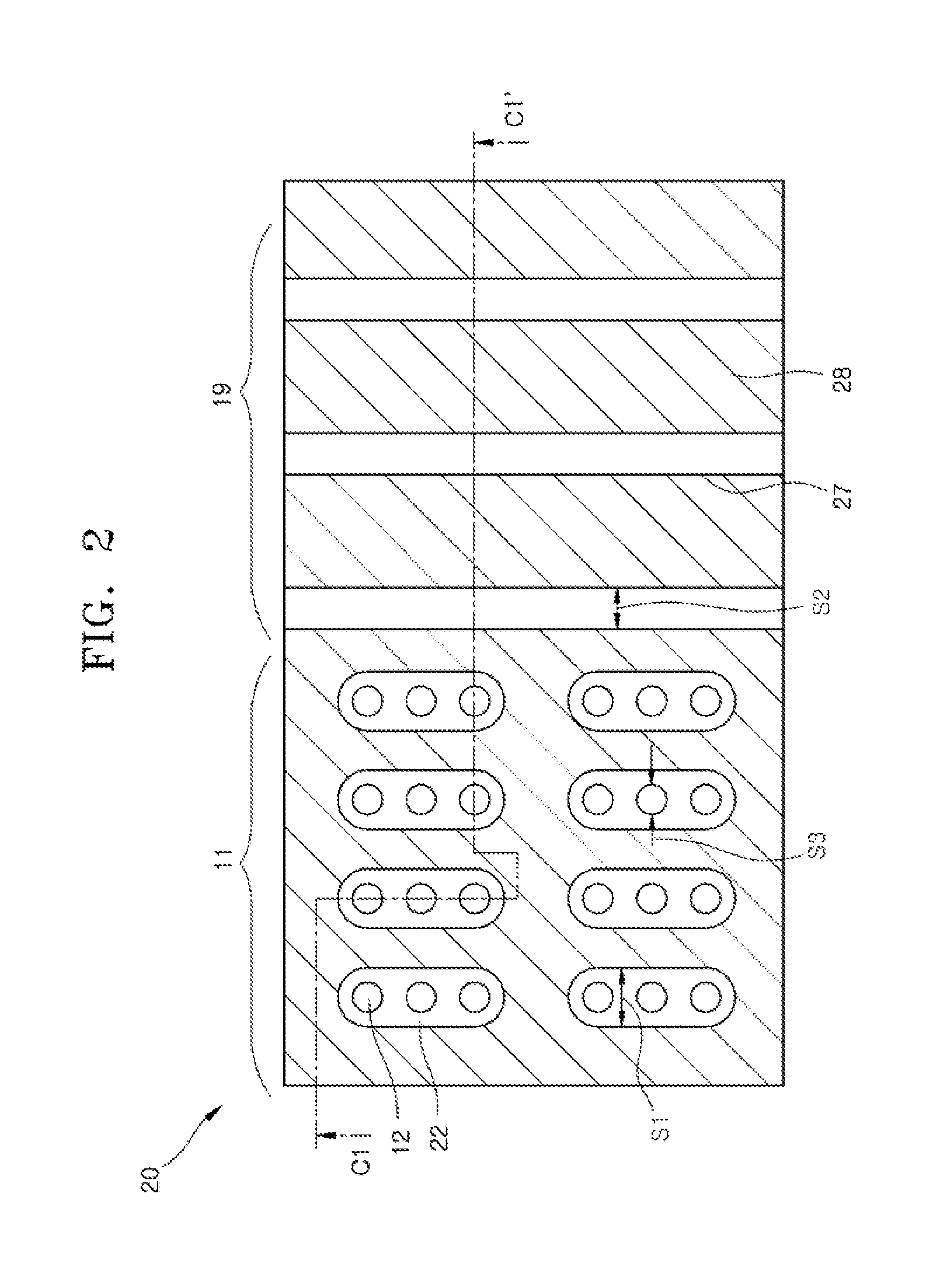Methods of forming patterns with block copolymer
- Summary
- Abstract
- Description
- Claims
- Application Information
AI Technical Summary
Benefits of technology
Problems solved by technology
Method used
Image
Examples
Embodiment Construction
[0017]It will be understood that although the terms first, second, third etc. may be used herein to describe various elements, these elements should not be limited by these terms. These terms are only used to distinguish one element from another element. Thus, a first element in some embodiments could be termed a second element in other embodiments without departing from the teachings of the present disclosure.
[0018]It will also be understood that when an element is referred to as being located “under”“beneath,”“below”, “lower,”“on”, “over”, “above,”“upper”, “side” or “aside” another element, it can be directly contact the other element, or at least one intervening element may also be present therebetween. Accordingly, the terms such as “under”, “beneath,”“below”, “lower,”“on”, “over”, “above,”“upper”, “side”“aside” and the like which are used herein are for the purpose of describing particular embodiments only and are not intended to limit the scope of the present disclosure. Other...
PUM
 Login to view more
Login to view more Abstract
Description
Claims
Application Information
 Login to view more
Login to view more - R&D Engineer
- R&D Manager
- IP Professional
- Industry Leading Data Capabilities
- Powerful AI technology
- Patent DNA Extraction
Browse by: Latest US Patents, China's latest patents, Technical Efficacy Thesaurus, Application Domain, Technology Topic.
© 2024 PatSnap. All rights reserved.Legal|Privacy policy|Modern Slavery Act Transparency Statement|Sitemap



